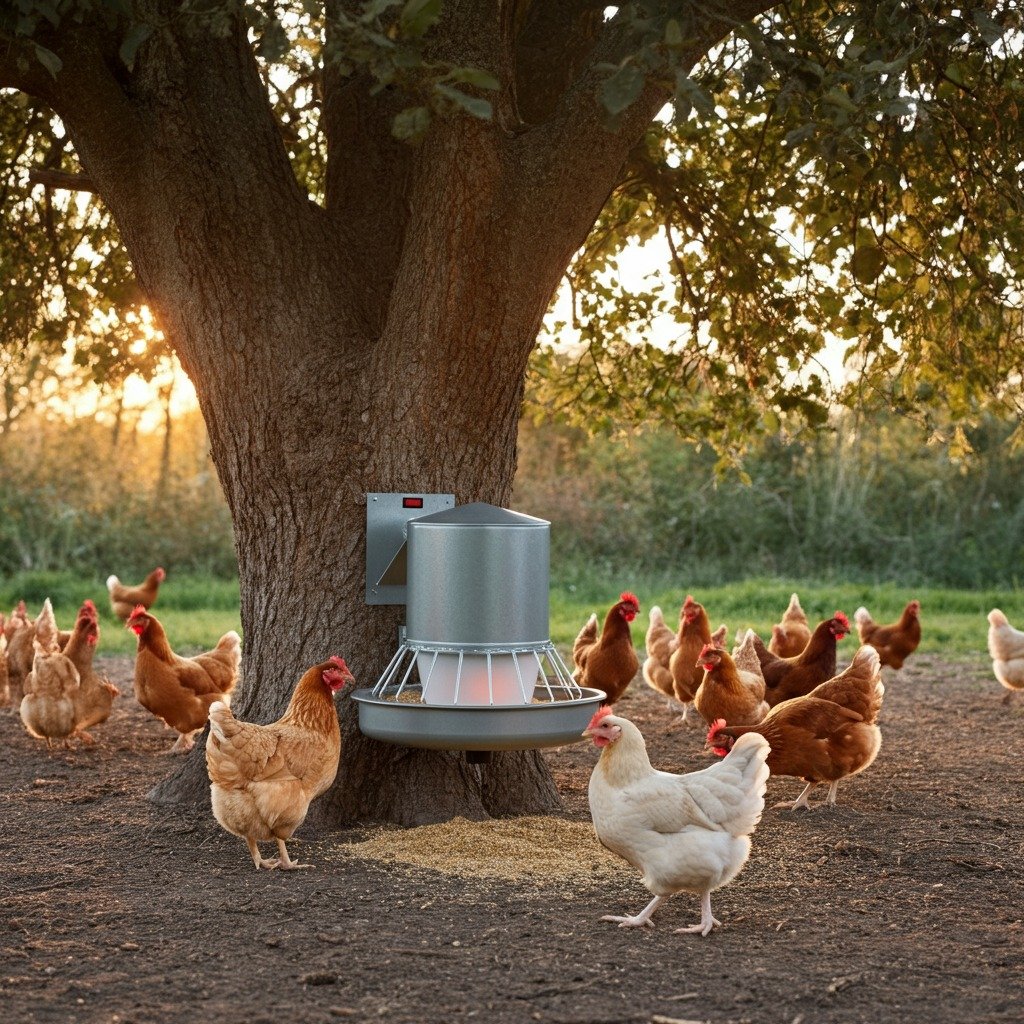Whether you’re an experienced chicken keeper or just starting your backyard flock, one thing is certain: a good chicken feeder is more than a convenience—it’s essential. From minimizing wasted feed to keeping your flock healthy, selecting the right feeder is a key step in poultry care. But with so many options, how do you choose?
This guide walks you through the types of chicken feeders, the factors you need to consider, how to build a DIY feeder, and tips on maintenance to help you keep your hens happy and healthy.
Why a Good Chicken Feeder is a Must-Have
A high-quality chicken feeder does more than hold feed. It ensures your chickens have consistent access to food while minimizing waste, protecting feed from pests, and keeping everything clean and organized. Whether you’re dealing with backyard predators like rats or wild birds, or just want to prevent feed spillage, the right feeder saves time, effort, and resources.
Types of Chicken Feeders
There’s no one-size-fits-all when it comes to chicken feeders. Here’s a breakdown of popular types:
1. Gravity Feeders
Gravity feeders use a simple design to channel food into a sheltered tray. They’re easy to set up, affordable, and ideal for smaller flocks. However, these may not be the best choice if pests or rain frequently interfere.
2. Automatic Chicken Feeders
Automatic feeders, like the 40 lb capacity GSHWXD Automatic Chicken Feeder, use gravity or mechanical mechanisms to release feed as your chickens access it.
Benefits:
- No-waste design saves on feed costs.
- Keeps feed protected from pests with lockable lids.
- Holds a large amount of feed, making it perfect for busy owners or larger flocks.
This particular model can feed six chickens simultaneously, withstands harsh weather, and features an elevated design for easier access. If convenience and durability top your list, this is an excellent choice.
3. Treadle Feeders
Treadle feeders prevent pests by requiring chickens to step onto a platform that opens access to the food. They’re a solid investment for addressing rat-proof feeding.
4. DIY Chicken Feeders
For the budget-conscious or crafty, DIY feeders are a great option. They can be made with simple materials like PVC pipes or buckets. We’ll cover how to build your own feeder later in this guide.
Key Factors to Consider When Selecting a Feeder
1. Capacity
Assess how much feed your flock needs. A smaller flock may need a feeder that can hold 10 lbs, while larger flocks thrive with feeders that hold 40 lbs or more, such as the GSHWXD model.
2. Build Quality
Your feeder needs to weather daily use. Look for feeders made from robust materials like galvanized metal or durable plastics. Avoid cheaply made models that can easily break.
3. Pest-Proofing
If rats, squirrels, or wild birds frequent your area, opt for a rat-proof chicken feeder. Models with locking lids and optional feed covers help deter freeloaders.
4. Weather Resistance
Outdoor feeders should be capable of withstanding rain, snow, and sun. Look for features like waterproof lids, anti-rust coatings, and raised legs.
5. Ease of Use
Choose feeders with user-friendly features like easy assembly, simple refilling mechanisms, and removable parts for cleaning.
DIY Chicken Feeder Guide
Crafting your own chicken feeder is easier than you’d think. A DIY feeder saves money while offering flexibility in design.
What You’ll Need:
- A 5-gallon plastic bucket with a lid.
- PVC elbow pipes (3-inch diameter works best).
- A drill with a hole saw attachment.
- Sandpaper.
Steps:
- Drill Holes:
Use the hole saw to cut holes near the base of the bucket. Space them evenly for multiple feeding ports.
- Attach PVC Elbows:
Insert PVC elbows into the holes, angling them downward. This keeps feed from spilling.
- Fill and Cover:
Pour chicken feed into the bucket, secure the lid, and place the feeder in a dry, shaded spot.
Pro Tip:
Elevate your DIY feeder slightly off the ground using bricks or blocks to ensure easy access and keep the feeding area clean.
Maintenance Tips for Chicken Feeders
Even the best chicken feeders require maintenance to stay effective. Here’s how to keep yours in top shape:
- Clean Regularly:
Use warm soapy water or a mild disinfectant to scrub away any mold, dirt, or feed residue.
- Inspect for Damage:
Check for cracks, rust, or malfunctioning parts that can compromise food safety.
- Refill on Schedule:
Avoid overfilling, which can attract pests or lead to stale feed.
- Monitor Pest Activity:
If you notice increased pest activity, implement pest-proofing measures like secure lids or treadle mechanisms.
Choosing the Right Feeder for Your Flock
Ultimately, the best chicken feeder depends on your specific needs. If you’re managing a larger flock or looking to automate your process, an automatic chicken feeder like the GSHWXD model could be ideal. For small flocks or DIY enthusiasts, a handmade feeder may be a great alternative.
Happy, well-fed chickens are productive chickens. Invest in a reliable feeder, and your hens will reward you with plenty of fresh eggs and happy clucks!
Need More Help? Explore the GSHWXD Automatic Chicken Feeder on Amazon to see if it’s the right solution for your coop.

